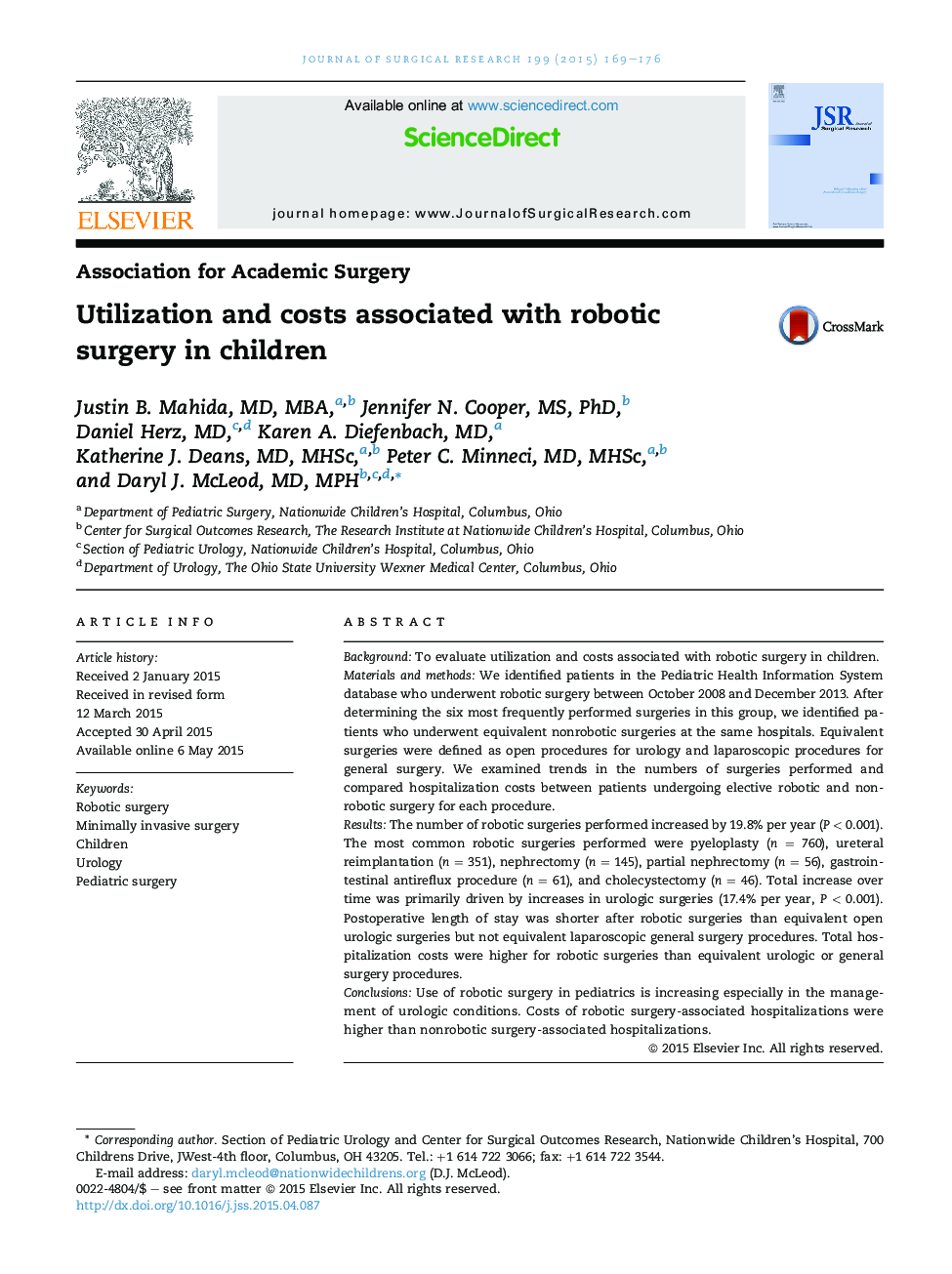| Article ID | Journal | Published Year | Pages | File Type |
|---|---|---|---|---|
| 4299611 | Journal of Surgical Research | 2015 | 8 Pages |
BackgroundTo evaluate utilization and costs associated with robotic surgery in children.Materials and methodsWe identified patients in the Pediatric Health Information System database who underwent robotic surgery between October 2008 and December 2013. After determining the six most frequently performed surgeries in this group, we identified patients who underwent equivalent nonrobotic surgeries at the same hospitals. Equivalent surgeries were defined as open procedures for urology and laparoscopic procedures for general surgery. We examined trends in the numbers of surgeries performed and compared hospitalization costs between patients undergoing elective robotic and nonrobotic surgery for each procedure.ResultsThe number of robotic surgeries performed increased by 19.8% per year (P < 0.001). The most common robotic surgeries performed were pyeloplasty (n = 760), ureteral reimplantation (n = 351), nephrectomy (n = 145), partial nephrectomy (n = 56), gastrointestinal antireflux procedure (n = 61), and cholecystectomy (n = 46). Total increase over time was primarily driven by increases in urologic surgeries (17.4% per year, P < 0.001). Postoperative length of stay was shorter after robotic surgeries than equivalent open urologic surgeries but not equivalent laparoscopic general surgery procedures. Total hospitalization costs were higher for robotic surgeries than equivalent urologic or general surgery procedures.ConclusionsUse of robotic surgery in pediatrics is increasing especially in the management of urologic conditions. Costs of robotic surgery-associated hospitalizations were higher than nonrobotic surgery-associated hospitalizations.
